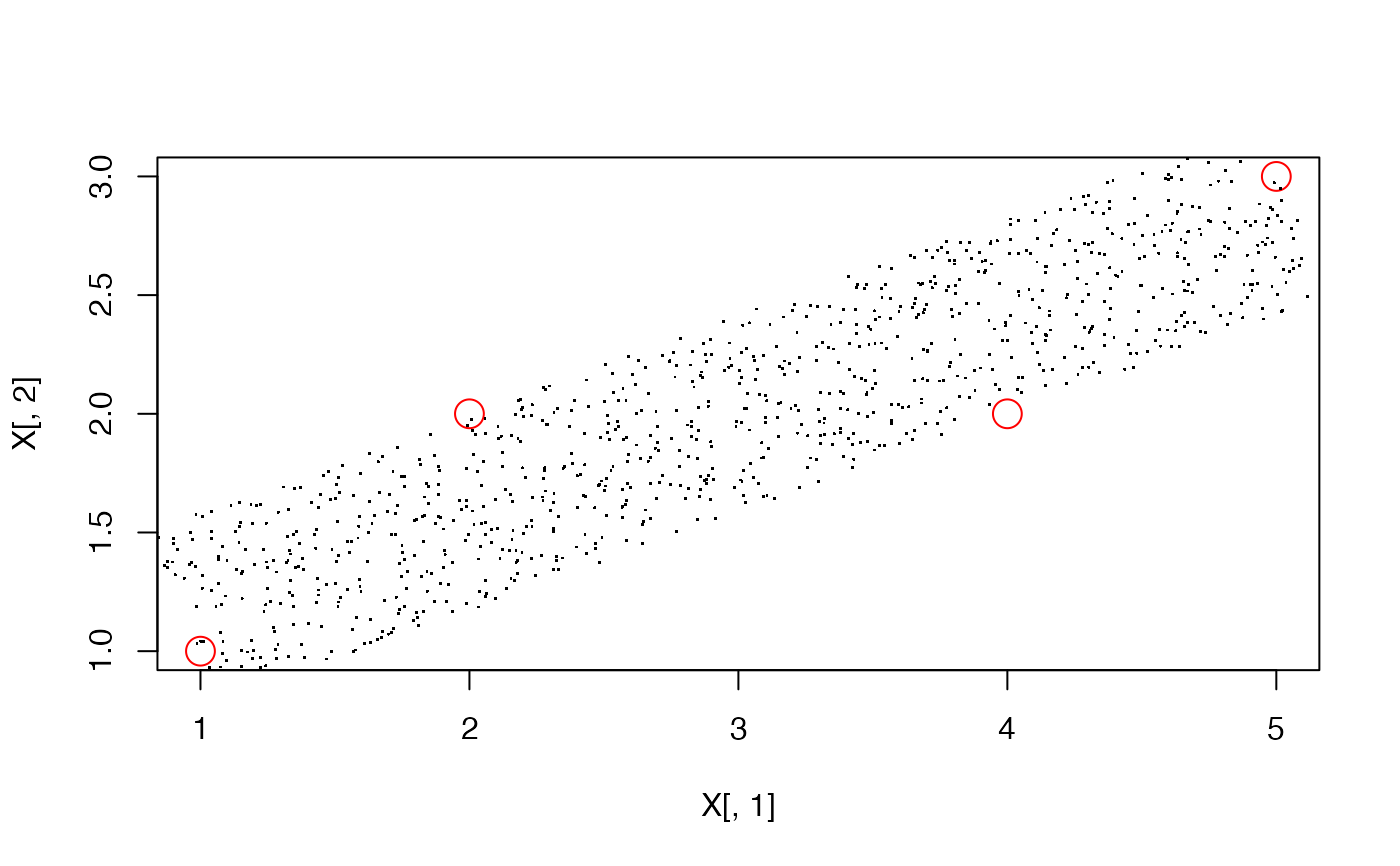Using given feasible parameter set, rotate using eigenvectors and sample within rotated hypercube
rotatedSampling(X, samples, expand = 0, ...)Arguments
- X
matrix or data.frame of feasible parameters
- samples
Number of samples to take
- expand
Ratio with which to expand bounds in rotated parameter space, as a buffer around the original hypercube
- ...
Arguments to pass to
parameterSets
Value
data.frame of parameter values drawn from rotated hypercube
Details
Parameters may not be in feasible parameter set
References
Karel, K. (1990). Membership-set estimation using random scanning and principal component analysis. Mathematics and Computers in Simulation 32(5-6): 535-543 DOI: http://dx.doi.org/10.1016/0378-4754(90)90009-8.
Also possibly related to Iman, R.L. and W.J. Conover (1982). A distribution-free approach to inducing rank correlation among input variables. Communications in Statistics - Simulation and Computation 11(3): 311-334 DOI: http://dx.doi.org/10.1080/03610918208812265.
